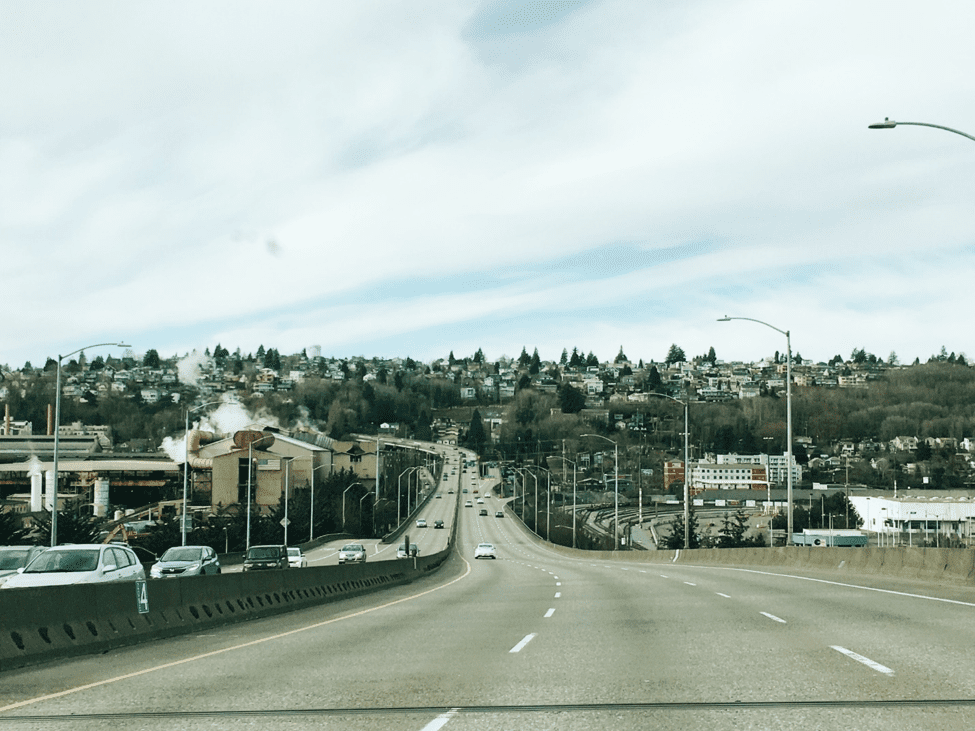 Caption: West Seattle Bridge looking west.
Caption: West Seattle Bridge looking west. This morning we presented to Seattle City Council the background that led us to close the West Seattle High-Rise Bridge, our next steps forward, and how we’re managing traffic in the meantime.
We’re committed to clear communications and transparency and want to share that same information with you.
We encourage you to watch our presentation or keep reading for a summary of the information we presented.
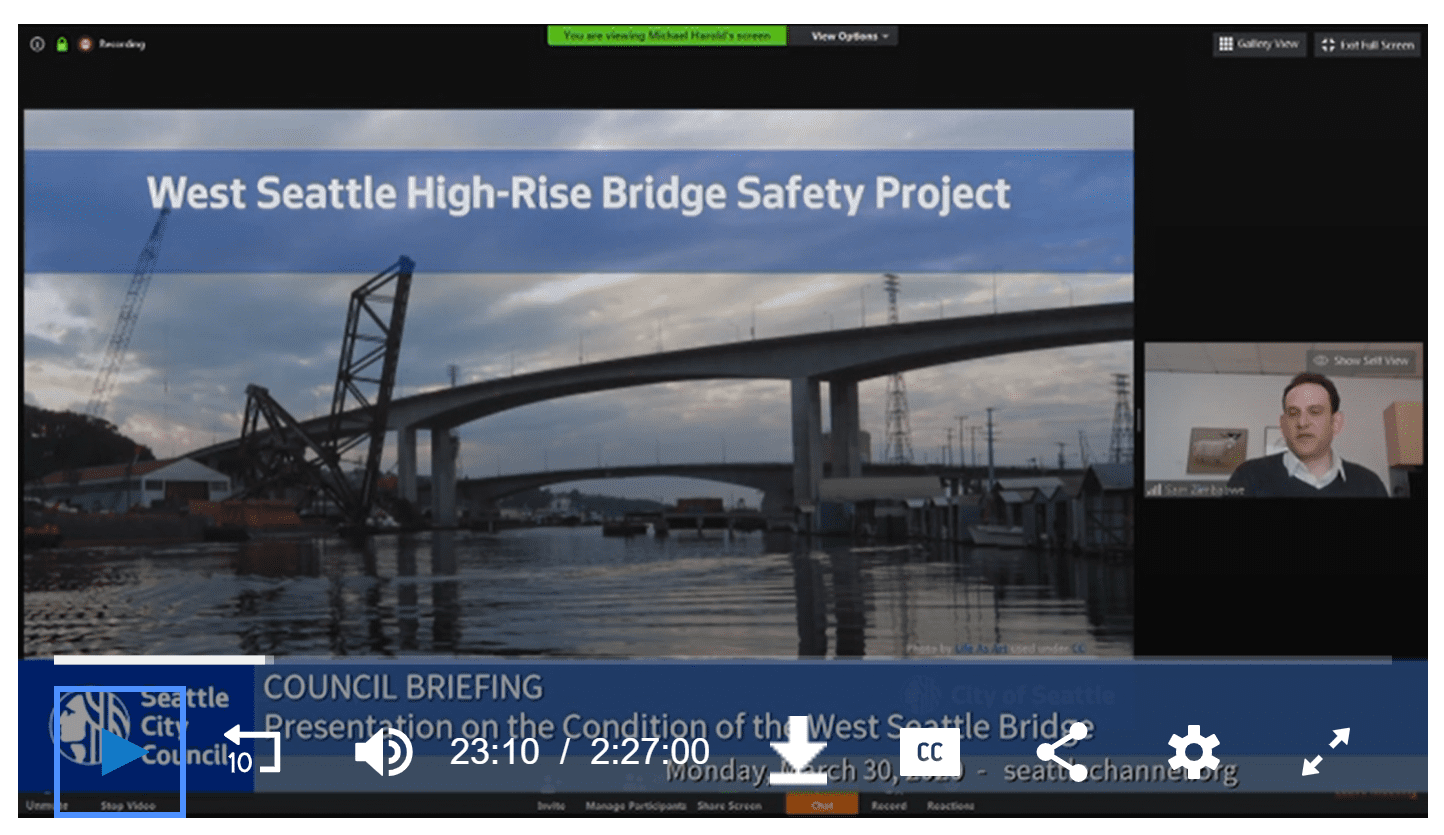
The decision to close the West Seattle Bridge is a significant inconvenience for West Seattle residents and our community at large.
We did not make this decision lightly, but ultimately we prioritize safety above all else.
Determining a solution and returning traffic to the West Seattle High-Rise Bridge is a key priority for us at Seattle Department of Transportation and the City, and we are working tirelessly to do that.
The rapid announcement to close the bridge didn’t stem from a lack of oversight and close monitoring. In fact, it was quite the opposite.
We regularly inspect our bridges, and since 2013 have inspected the West Seattle High-Rise Bridge at least once a year, well above the “every two years” federal standard. The actions of the past few days is a powerful example of why these efforts are critical and were effective.
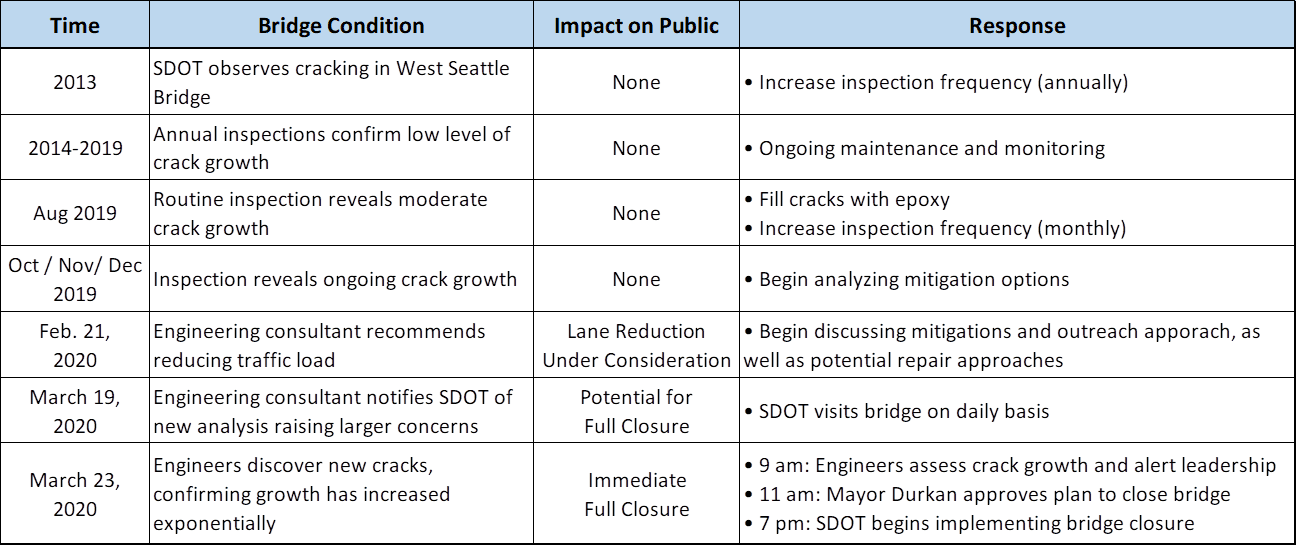
As shared last week, during a 2013 routine inspection of the West Seattle Bridge, our inspectors discovered four sets of cracks in the bridge support structure.
Some cracking is normal for this type of bridge, but we decided to increase monitoring to keep an eye on it.
Between 2013 and late 2019, we regularly monitored the cracks, preformed ongoing maintenance, and began analyzing mitigation options, none of which would have disrupted normal use of the bridge.
Put another way, during inspections from 2013 to present, we did not observe deterioration that called for remediation efforts that would disrupt normal, daily use of the West Seattle High-Rise Bridge by the public until late February 2020, which was a consideration of lane reductions at some point in the future.
On March 19, our structural engineering consultant notified us that they had completed new analysis of previously collected data raising larger concerns and a recommendation that closure may be necessary at some point.
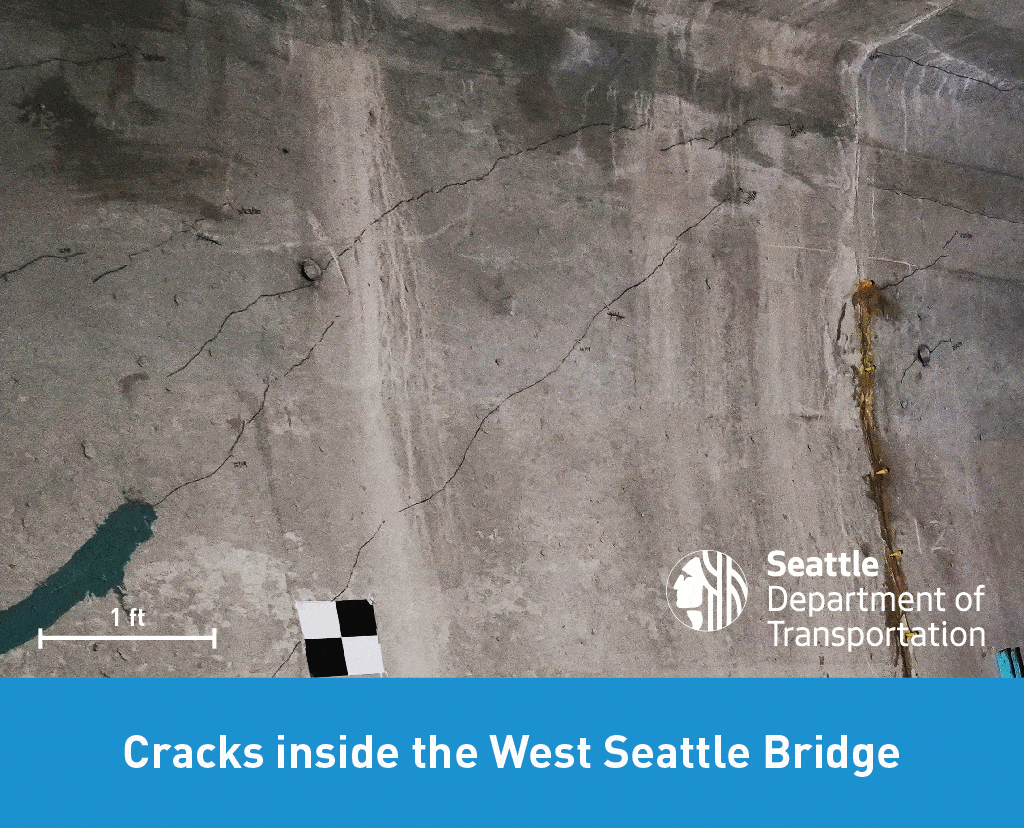
We conducted daily observations over the next four days to validate and ground-truth the consultant’s recommendations.
It was not until Monday, March 23, that we found significant new cracking, which confirmed growth had rapidly accelerated to the point where there was no other option but to not only close the bridge, per expert recommendations, but to do so immediately out of an abundance of caution.
The reason the March 23 announcement came quickly wasn’t a withholding of information, but rather the outcome of a close monitoring regime that caught a rapid acceleration of cracking within a matter of days and hours that enabled us to make this hard, but critical decision.
Right away, we put in motion a plan to close the bridge that day. Immediately after the closure recommendation was approved by Major Jenny Durkan, an announcement was made to the public during a press conference at 3:00 pm, and the bridge closed to all traffic at 7:00 pm.
We are currently taking all steps to maintain the integrity of the structure.
We aim to return the bridge to operation as soon it is safe to do so. We will seek interim repairs with a goal of restoring some traffic and extend bridge life by 10+ years.
The immediate first step we took was to stop travel completely in order to reduce weight on the bridge and preserve the structure.
We’ll continue to conduct regular inspections and closely monitor the bridge as we take the following steps:
- Take all steps to maintain the integrity of the bridge
- Perform failure modeling and prepare an emergency response plan, out of an abundance of caution
- Determine a contracting method and select an engineering consultant/construction team for design and installation of shoring and repairs
- Determine funding for design and construction
At this time, we don’t know with certainty what approach we will take to repair the bridge, but we are working tirelessly to gather the information needed to make that determination.
It will likely involve a fiber wrap with additional reinforcement at key connections. An additional timeline consideration is that if the repairs impact the navigation channel below, we will also need to obtain US Coast Guard permits before construction.
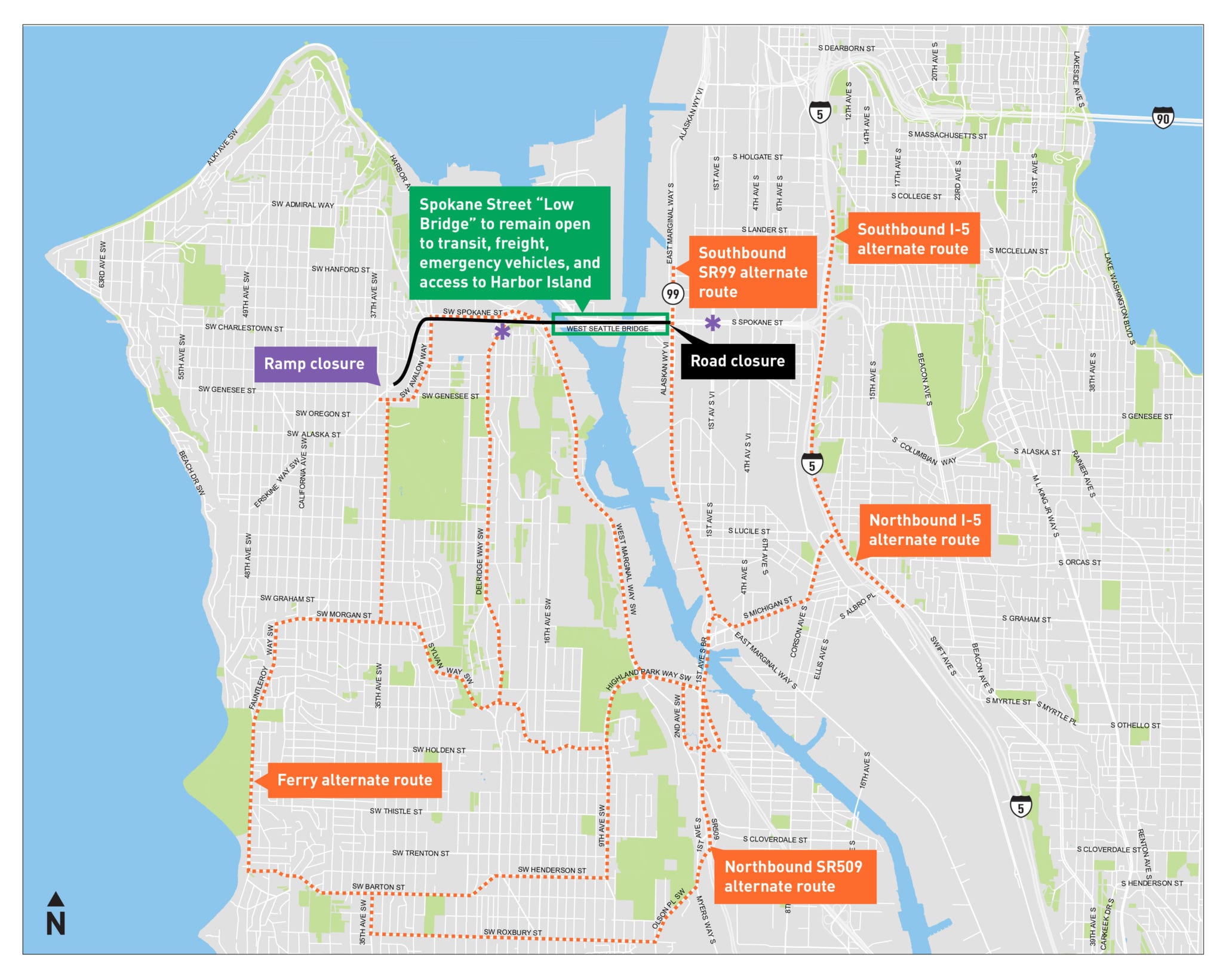
We’re actively working to manage traffic impacts and make improvements.
Closing the West Seattle Bridge has a similar level of complexity to our recent Viaduct closure, but with fewer re-route choices and an extremely condensed timeline for decision making.
Attempting to shift all the traffic from the High Bridge to the Low Bridge would create unacceptable traffic congestion. Together, the bridges carried more than 100,000 daily trips over nine lanes of traffic. The two-lane low bridge is not designed to carry this capacity.
At this time, the Low Bridge remains closed to the general driving public to prioritize emergency access for first responders, freight delivering critical supplies, and transit have rapid access to and from West Seattle.
The general driving public will be redirected to 1st Ave S Bridge and South Park Bridge.
The bridge closure will result in travel changes for thousands of people and will increase traffic pressure in important locations.
Throughout the closure, we will actively work to manage traffic and make improvements to safety and operations throughout the affected area.
At the intersection of Highland Park Way SW and SW Holden Street, we installed a temporary, 4-way traffic signal and making pedestrian and bike improvements to help ease traffic congestion and improve safety. We’re also installing additional traffic count stations to monitor traffic along the alternate route.
Thank you for your continued patience and understanding as you navigate new routes.
We’re committed to clear communications and transparency and will share new information as it unfolds.
Visit our West Seattle Bridge information hub on our website where you are able to sign up for project update emails.